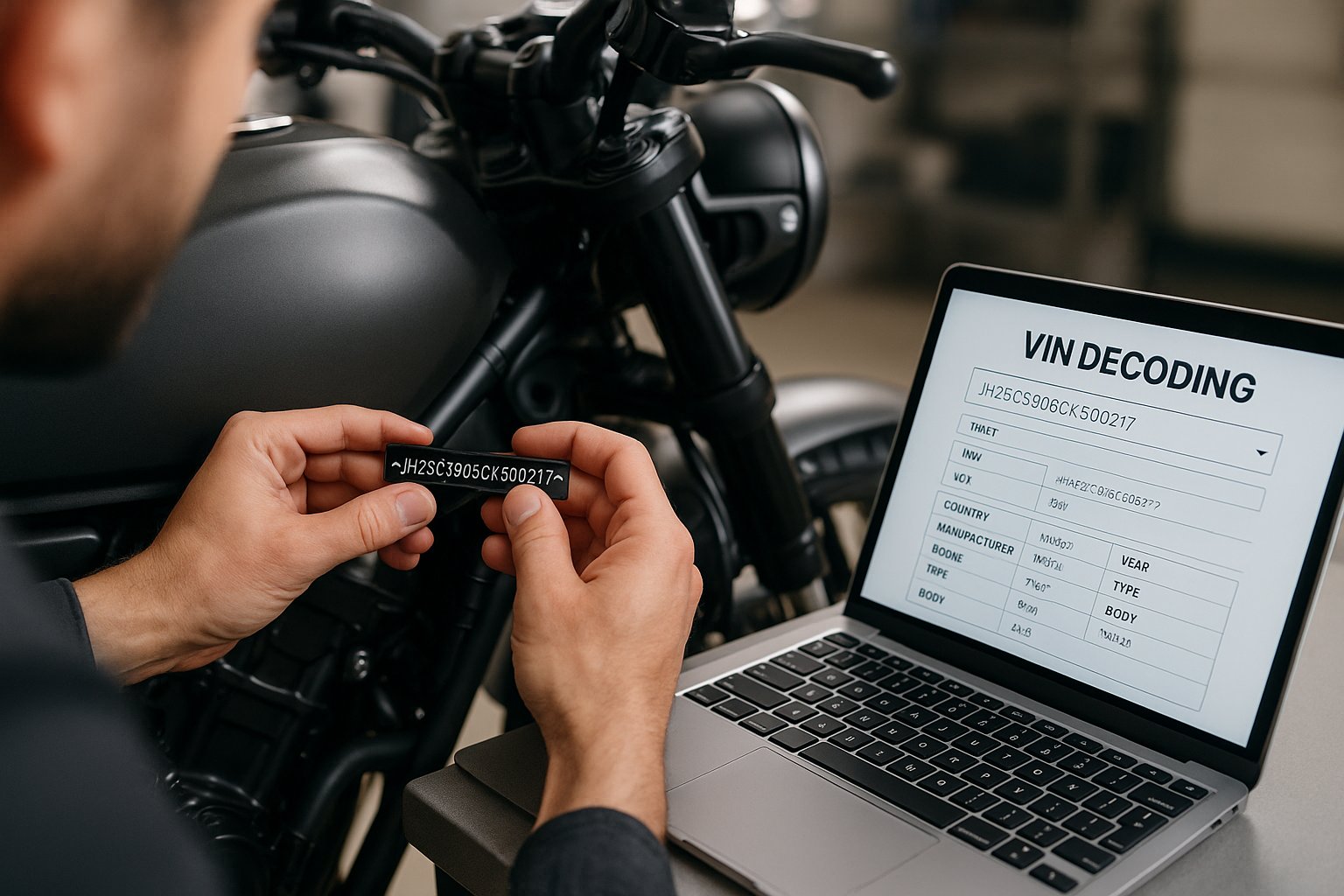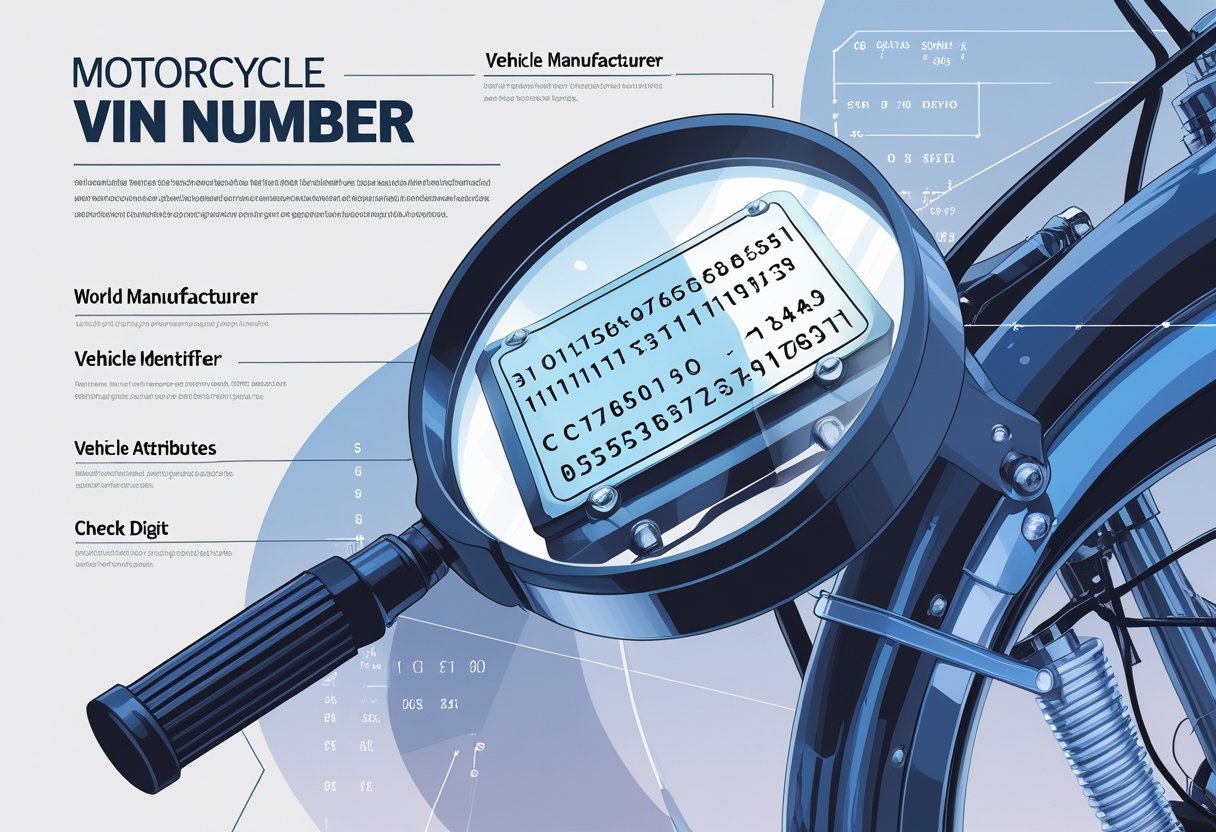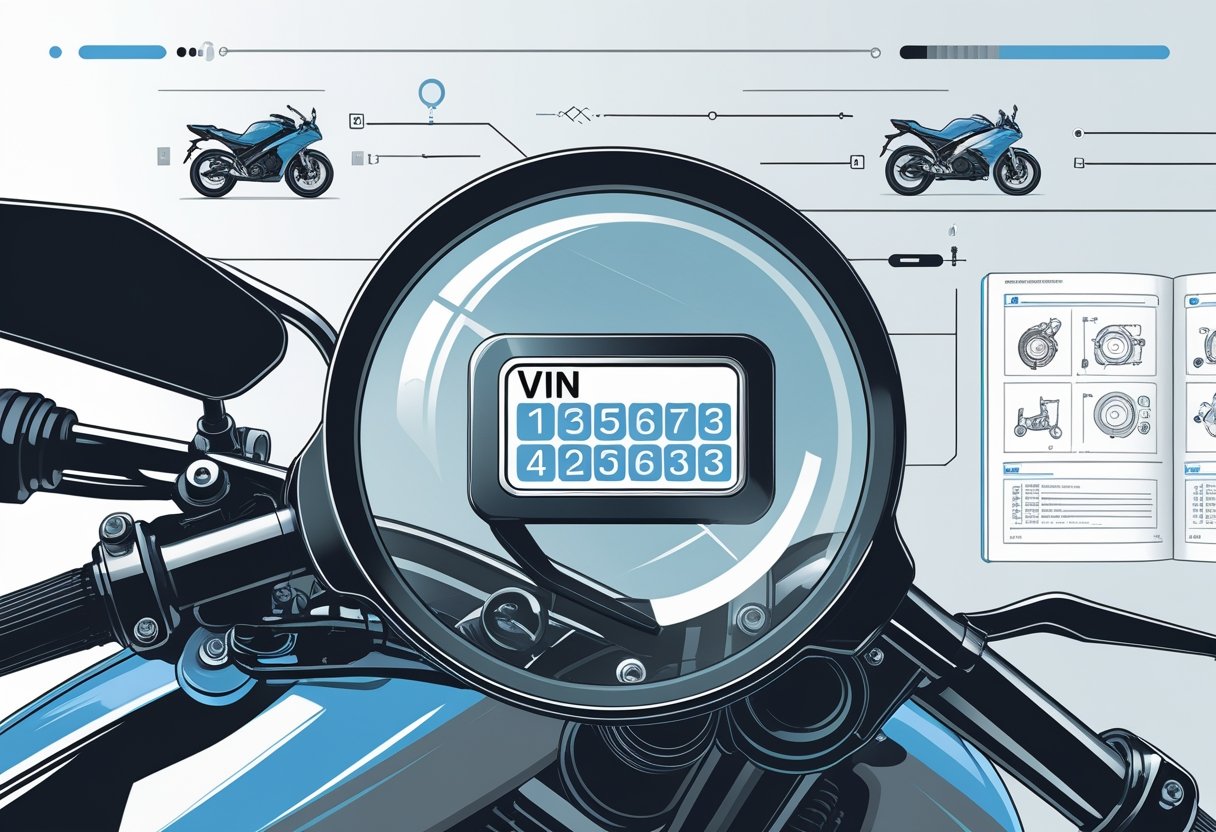
Motorcycle VIN Check: Read & Decode Your Bike’s VIN | Check
A motorcycle VIN check unlocks info like the bike’s make, model, year, engine type, manufacturing origin, accident history, and even if it’s stolen or recalled. If you know how to decode motorcycle VIN numbers, you can dodge expensive mistakes buying used bikes or just get the right parts and service for your ride.

Motorcycle VIN Check: What It Is and Why It Matters
With a motorcycle VIN check, you can pull up a bike’s full history using its 17-character ID. It’s a quick way to spot accidents, ownership changes, recalls, or sketchy stuff before you buy.
How a Motorcycle VIN Check Works
A motorcycle VIN check grabs data from government agencies, DMVs, insurance companies, and industry sources. You just punch the VIN into an online tool and let it do its thing.
State DMVs track titles and registrations. Insurance companies log accident claims and total loss reports.
The NHTSA keeps recall info handy. Cops flag stolen bikes. Salvage yards and auction houses add in damage records.
Plenty of sites offer free basic VIN checks—those spit out the essentials fast. If you want the full story, you’ll probably pay for a detailed report with all the accident and value info.
The actual check takes seconds. The system scans all its databases and spits out a report on the bike’s background.
Key Information Revealed by a VIN Lookup
First thing a VIN lookup shows? The bike’s build details—year, make, model, engine size, and where it came together. You can also check if the parts match what the manufacturer intended.
Title and ownership history comes standard in most reports. You’ll see how many folks have owned it and if the title’s clean, salvage, or something else.
Accident and damage records dig into crashes, repairs, and insurance claims. The report flags if the bike was totaled or just dinged up.
Recall info from safety campaigns helps you fix issues that could be dangerous. If there’s an active recall, don’t wait—get it sorted before you ride.
Theft records tell you if the bike was ever reported stolen. No one wants to buy a stolen motorcycle by accident.
Service and maintenance history might pop up if previous owners left a paper trail with shops that share that data.
When to Use a Motorcycle VIN Check
Thinking about buying a used motorcycle or dirt bike? Run a VIN check first. It’s the best way to avoid ugly surprises the seller forgot to mention.
Insurance companies usually want a VIN check before they’ll cover you. They use the info to figure out your rates and what kind of coverage you get.
If you already own a bike, it’s not a bad idea to check the records now and then. That way, you’ll catch any weirdness like someone trying to steal your bike’s identity.
Lenders will ask for VIN verification before they’ll approve a motorcycle loan. They need to know the title is legit and the value is real.
Cops use VIN checks during stops and investigations. They can quickly confirm who owns the bike and if it’s flagged as stolen.
Motorcycle-focused VIN lookup services work with salvage yards, insurance companies, and state DMVs to get the most accurate powersports data they can.
How to Read and Decode Motorcycle VIN Numbers
If you want to read a motorcycle VIN, you just need to know its 17-character format and what each chunk means. The code splits into three main parts: manufacturer, vehicle details, and production info.
Where to Find Your Motorcycle VIN Number
You’ll spot the VIN in a few standard spots. Most manufacturers stamp it right on the steering neck—the part of the frame where the front fork connects.
There’s usually another VIN on the engine case, often on the right side near the crankcase. Sometimes you’ll find it on the frame’s down tube or even the rear section.
Don’t forget paperwork—your title, registration, and insurance docs will have the VIN too. Some bikes also have a sticker under the seat or near the headstock.
Common VIN Locations:
Steering neck (frame tube)
Right side of engine case
Frame down tube
Title and registration papers
Structure of a Motorcycle VIN Number
Every VIN is exactly 17 characters, using both numbers and letters. The structure follows ISO standards for all vehicles, motorcycles included.
The code splits into three main sections. The first three spots are the World Manufacturer Identifier (WMI). Next, positions 4-9 make up the Vehicle Description Section (VDS).
Positions 10-17 are the Vehicle Identifier Section (VIS). Each character tells you something specific.
VIN Structure Breakdown:
Positions 1-3: World Manufacturer Identifier (WMI)
Positions 4-9: Vehicle Description Section (VDS)
Positions 10-17: Vehicle Identifier Section (VIS)
Decoding the World Manufacturer Identifier (WMI)
The WMI tells you who built the bike and where. The first character is the country code—a letter or number for each country.
The second character points to the manufacturer. The third one marks the vehicle type or division.
If a small manufacturer makes fewer than 500 bikes a year, they use "9" as the third digit. That’s how you spot boutique builders.
WMI Examples:
1HD: Harley-Davidson (USA)
JYA: Yamaha (Japan)
JS1: Suzuki (Japan)
JH2: Honda (Japan)

Breaking Down Vehicle Description and Identifier Sections
The Vehicle Description Section (VDS), which is positions 4-9, describes key features—engine, body style, model, safety stuff.
Position 9 is the check digit. Manufacturers calculate this using a formula to make sure the VIN is legit.
The Vehicle Identifier Section (VIS) covers positions 10-17. Position 10 is the model year (letter or number). Position 11 is the assembly plant.
The last six digits (positions 12-17) are the production sequence. That’s basically your bike’s number in the assembly line for that plant and year.
Key VIS Information:
Position 10: Model year
Position 11: Assembly plant
Positions 12-17: Production sequence number
Beyond the Basics: Advanced VIN Insights for Motorcycle Enthusiasts
While standard VIN checks reveal essential history, advanced decoding can uncover insights that matter most to riders. The VIN can confirm whether a bike has its original factory specifications or if it's been modified with aftermarket parts that could affect performance and value. For vintage motorcycle collectors, the VIN can authenticate rare models and verify production numbers that significantly impact collector value. Track enthusiasts can use VIN checks to confirm a bike hasn't been crashed and rebuilt after race use, while adventure riders can verify a bike's true country of origin and compliance with international standards for global travel. These nuanced details separate casual checks from the comprehensive analysis that serious riders need.
Run Your Motorcycle VIN Check Today
Before you buy a used bike, know its full story. With VINspectorAI Motorcycle VIN Check, see accident history, title status, recalls, theft records, and specs in seconds—pulled from trusted DMV & NMVTIS sources. Avoid costly surprises, confirm authenticity, and ride with confidence.
Frequently Asked Questions
Get answers to common questions about Motorcycle VIN Check: Read & Decode Your Bike’s VIN | Check
Uncover Complete Vehicle History Reports
Discover critical vehicle information before you buy. Our VIN decoder reveals accident records, title status, recalls, and service history to help you make informed decisions.
Related Articles
Explore Tags
More from Automotive Technology

Get a 100% free auto history check with VinspectorAI. No hidden fees. Uncover accidents, ownership, theft & more. Test our full AI analysis with a free demo!
Transparent VIN checks build trust in auto sales. Give buyers clear vehicle history reports & integrate checks for confident, informed car purchases.

VINspectorAI uses AI to uncover accidents, fraud, recalls & true value — ensuring safe, smart purchases. Why You Should Check a Car’s, check now with vinspectorai.